- Benefits of Growing Blue Spruce from a Cone
- How to Collect Blue Spruce Cones
- Preparing Blue Spruce Cones for Germination
- Gathering the Cones
- Drying the Cones
- Extracting the Seeds
- Seed Treatment
- Storage
- Conclusion
- Germinating Blue Spruce Seeds
- Gather the Seeds
- Extract the Seeds
- Stratification
- Sowing the Seeds
- Care and Maintenance
- Transplanting
- Conclusion
- Transplanting Blue Spruce Seedlings
- Caring for Blue Spruce Trees
- 1. Planting
- 2. Watering
- 3. Fertilizing
- 4. Pruning
- 5. Disease and Pest Control
- 6. Winter Protection
- 7. Maintenance and Care
- Questions and Answers:
- Can I grow blue spruce from a cone?
- What is the process of growing blue spruce from a cone?
- When is the best time to collect blue spruce cones?
- How do I extract the seeds from blue spruce cones?
- Do I need to treat or prepare the seeds before planting?
- What type of soil is best for growing blue spruce from a cone?
- Is it worth the effort to grow blue spruce from a cone?
- Videos: WHY and HOW to PRUNE Fig Trees In CONTAINERS
If you’ve ever admired the majestic beauty of blue spruce trees, you may have wondered if it’s possible to grow your own from a cone. Blue spruces, known for their stunning blue-green foliage, are a popular choice for landscaping and can add a touch of elegance to any garden.
While growing blue spruce from a cone can be a rewarding experience, it’s important to understand that it’s not the easiest task. Blue spruce cones contain the seeds needed for germination, but successfully growing a healthy tree requires careful attention and patience.
In this ultimate guide, we will walk you through the steps of growing blue spruce from a cone, from collecting the cones in the fall to nurturing the young seedlings. We will provide you with the tips and tricks you need to increase your chances of success and help you decide if it’s worth the effort.
So, if you’ve ever dreamed of having your own blue spruce trees, join us on this adventure and discover whether growing them from a cone is the right choice for you.
Benefits of Growing Blue Spruce from a Cone
Growing blue spruce from a cone can be a rewarding experience, offering several benefits. Here are some of the key advantages of growing blue spruce from a cone:
- Cost-effective: Growing blue spruce from a cone is an affordable way to propagate these beautiful trees. Cones are readily available, and you can often find them on the ground near mature blue spruce trees.
- Greater genetic diversity: By growing blue spruce from a cone, you can introduce a greater genetic diversity into your landscape. This is important for the long-term health and resilience of the blue spruce population in your area.
- Learning opportunity: Growing blue spruce from a cone provides an educational opportunity for both children and adults. It gives you the chance to learn about the tree’s life cycle, growth patterns, and how to care for young saplings.
- Connection to nature: Planting a blue spruce tree that was grown from a cone creates a personal connection to nature. You can watch the tree grow and develop over the years, and it can become a symbol of your ecological stewardship.
- Environmental benefits: Blue spruce trees offer various environmental benefits, such as providing shade, reducing soil erosion, and acting as a windbreak. By growing them from cones, you contribute to the overall environmental health of your area.
- Aesthetically pleasing: Blue spruce trees are known for their vibrant bluish-green foliage and elegant shape. By growing them from cones, you can add natural beauty and visual interest to your landscape.
- Personal satisfaction: Growing a blue spruce tree from a cone is a satisfying endeavor. It gives you a sense of accomplishment and pride in nurturing a tree from its earliest stages of life.
Overall, growing blue spruce from a cone offers numerous benefits, both practical and personal. It is a cost-effective and environmentally friendly way to add the beauty and benefits of blue spruce trees to your surroundings.
How to Collect Blue Spruce Cones
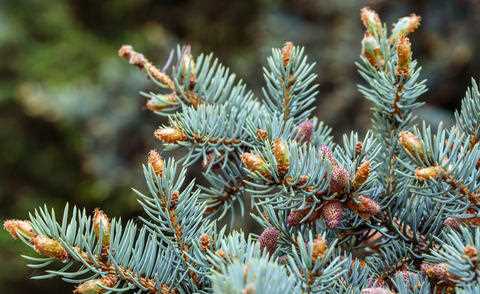
Collecting blue spruce cones can be a fun activity and a great way to propagate new trees. Here are a few steps to help you collect blue spruce cones:
- Identify the right time to collect: Blue spruce cones are usually ready for collection in the late summer or early fall. Look for cones that are mature and fully developed. They should be firm and have a bluish-purple color.
- Locate blue spruce trees: Blue spruce trees are native to the Rocky Mountains and are commonly found in the western United States. Look for blue spruce trees in parks, forests, or open spaces.
- Gather necessary tools: Before collecting blue spruce cones, make sure you have the right tools. You will need a pair of gloves to protect your hands, a bag or container to hold the cones, and scissors or clippers to cut the cones from the tree.
- Select healthy cones: Choose cones that are healthy and free from any damage or disease. Avoid collecting cones that are discolored, cracked, or have any signs of pest infestation.
- Reach for the higher branches: Blue spruce cones are often found on the upper branches of the tree. Use a ladder or a long pole with clippers to reach the cones that are out of your reach.
- Cut the cones: Carefully cut the cones from the tree using scissors or clippers. Leave a small portion of the stem attached to the cone for easier handling.
- Store the cones: After collecting the cones, place them in a bag or container. Make sure the container is breathable to prevent moisture buildup, which could lead to mold or fungal growth. Store the cones in a cool and dry place until you are ready to extract the seeds.
Collecting blue spruce cones is an exciting process and can provide you with an abundance of seeds to grow new trees. Just make sure to follow these steps and handle the cones with care to ensure the best possible results.
Preparing Blue Spruce Cones for Germination
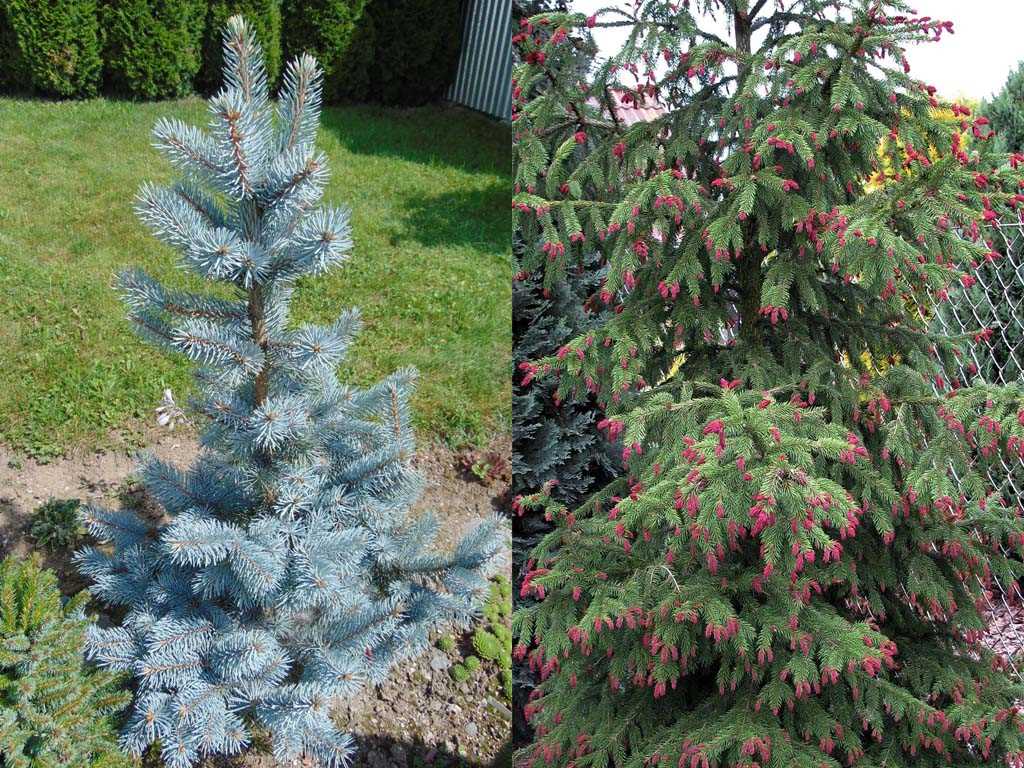
Before you can successfully grow blue spruce trees from cones, it’s important to properly prepare the cones for germination. This process involves a few steps to ensure the cones are ready to release their seeds and support seedling growth.
Gathering the Cones
The first step in preparing blue spruce cones for germination is to gather them from the tree. Look for cones that are fully mature and have a light brown color. Avoid cones that are green or closed, as they are not yet ready to release their seeds.
Drying the Cones
Once you have gathered the cones, it’s necessary to dry them before extracting the seeds. Lay the cones out in a single layer on a flat surface and place them in a warm and well-ventilated area, such as a sunny window sill or a dry outdoor space. Allow the cones to dry for several weeks, or until they are fully open and the seeds are easily released.
Extracting the Seeds
After the cones have dried and opened, it’s time to extract the seeds. Gently tap the cones to loosen the seeds and then carefully remove them. Blue spruce seeds are small and dark brown in color. Make sure to collect as many viable seeds as possible, as not all of them will germinate.
Seed Treatment
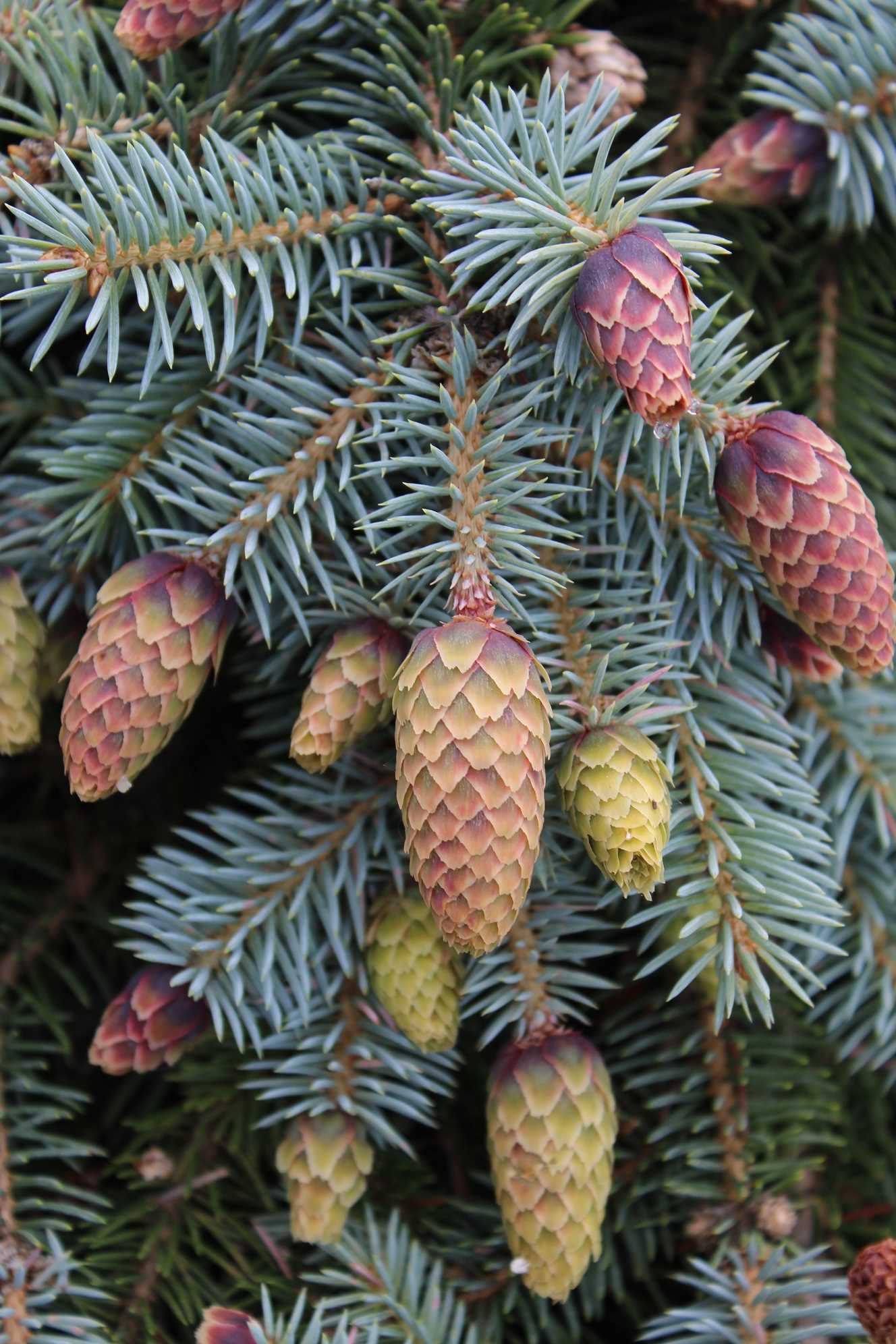
Blue spruce seeds have a hard outer shell that can impede germination. To improve the chances of successful germination, it is recommended to perform seed treatment. This can be done by soaking the seeds in water for 24 hours or by scarifying the seeds with sandpaper or a file to break through the hard shell.
Storage
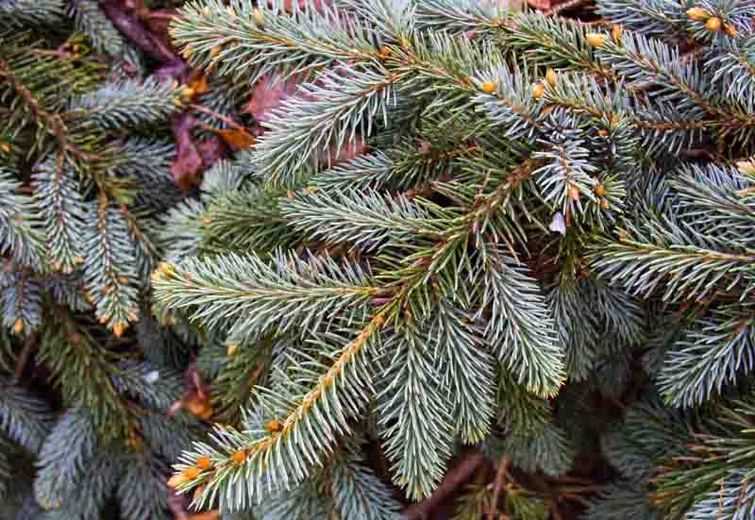
If you are not ready to plant the blue spruce seeds immediately after extraction, it is important to store them properly to maintain their viability. Place the seeds in a sealed plastic bag or airtight container and store them in a cool and dry location, such as a refrigerator. Make sure to label the storage container with the date and seed type for future reference.
Conclusion
By following these steps to prepare blue spruce cones for germination, you can increase your chances of successfully growing blue spruce trees from seeds. Properly preparing the cones and treating the seeds will help ensure optimal seedling growth and improve overall success rates.
Germinating Blue Spruce Seeds
Germinating blue spruce seeds is a rewarding and exciting process that allows you to grow your own blue spruce tree from scratch. While it may require some patience and careful attention, it can be a fun and fulfilling project for any garden enthusiast.
Gather the Seeds
The first step in germinating blue spruce seeds is to gather them. Blue spruce trees produce cones that contain numerous seeds. Look for mature cones that are brown and have started to open. Collect the cones and store them in a dry place until you are ready to extract the seeds.
Extract the Seeds
To extract the seeds from the cones, you can either wait for the cones to fully open or assist the process by gently squeezing the cones. This will release the seeds onto a newspaper or other surface. Remove any debris or fleshy material from the seeds and discard them.
Stratification
Blue spruce seeds require a period of cold stratification to break dormancy and stimulate germination. Place the cleaned seeds in a plastic bag or container with slightly damp sand or vermiculite. Seal the bag or container and store it in the refrigerator at a temperature around 40 degrees Fahrenheit (4 degrees Celsius) for 4 to 8 weeks.
Sowing the Seeds
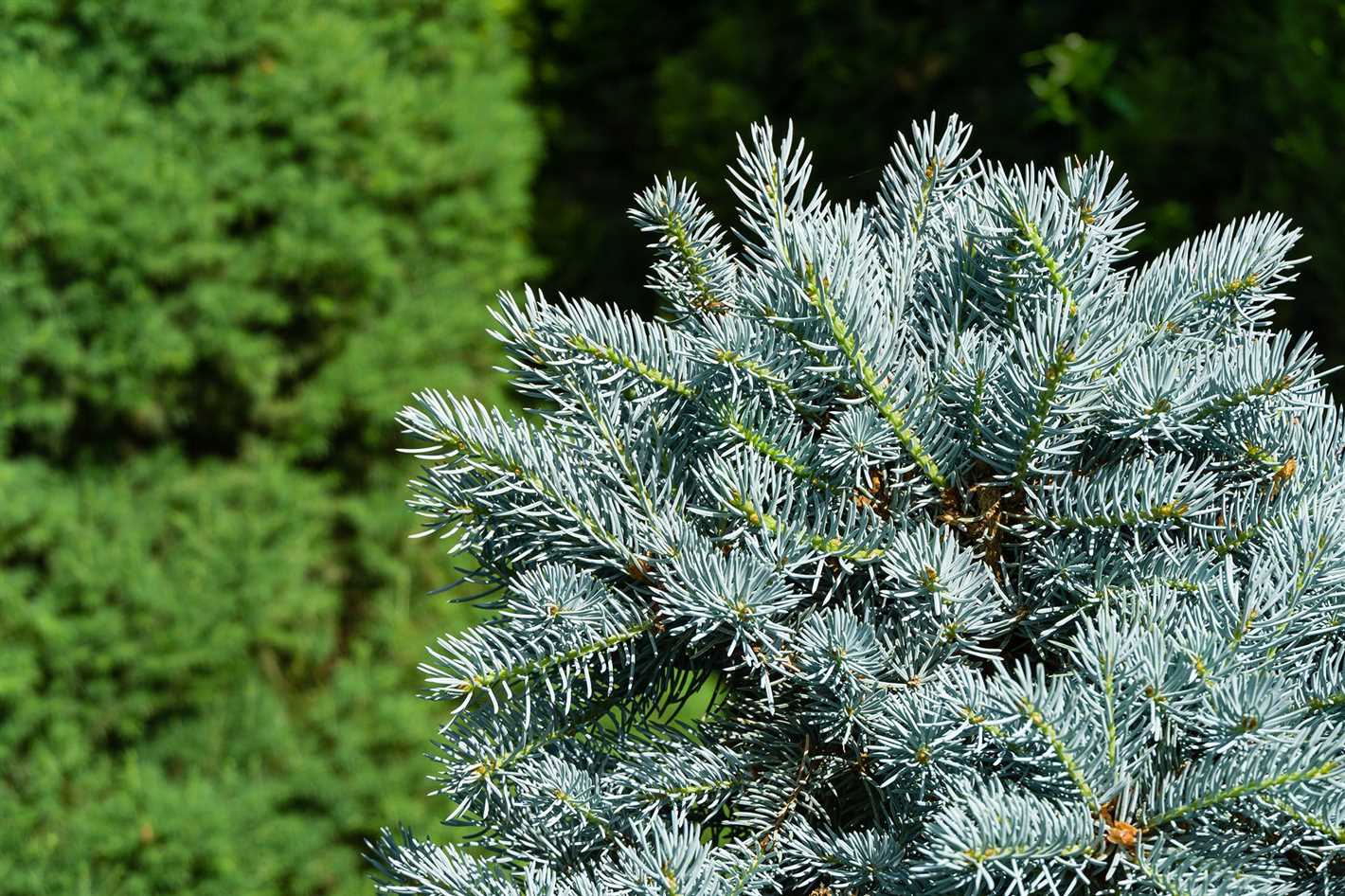
After the stratification period, it’s time to sow the blue spruce seeds. Fill a seed tray or small pots with a well-draining potting mix. Lightly press the seeds into the soil and cover them with a thin layer of soil or vermiculite. Water the soil lightly to ensure it is moist but not soaked.
Care and Maintenance
Place the seed tray or pots in a warm and well-lit area, but away from direct sunlight. Keep the soil consistently moist by misting it with water whenever it starts to dry out. Avoid overwatering, as this can lead to root rot. Germination may take several weeks or even months, so be patient and continue to provide the necessary care.
Transplanting
Once the blue spruce seedlings have developed a few true leaves and are strong enough, they can be transplanted into larger pots or directly into the ground. Make sure to acclimate the seedlings to the new environment by gradually exposing them to outdoor conditions over a period of time.
Conclusion
Germinating blue spruce seeds is a rewarding and enjoyable process. It requires careful attention and patience, but the result of growing your own blue spruce tree from a seed is well worth the effort. Following the steps outlined in this guide will give you the best chance of success in germinating blue spruce seeds and growing healthy seedlings. Happy gardening!
Transplanting Blue Spruce Seedlings
Transplanting blue spruce seedlings is an important step in successfully growing them. Here are some tips and guidelines to follow when transplanting blue spruce seedlings:
- Timing: Transplant blue spruce seedlings in early spring or late fall, when the weather is cool and there is less chance of stress on the plants.
- Preparing the soil: Before transplanting, prepare a well-drained planting site with acidic soil. Blue spruce seedlings prefer a pH level between 5.0 and 7.0.
- Choosing the right location: Select a location that offers full sun and ample space for the blue spruce seedlings to grow. Avoid areas with strong winds or excessive moisture.
- Transplanting technique: Dig a hole that is slightly larger than the root ball of the blue spruce seedling. Gently remove the seedling from its container, being careful not to damage the roots. Place the seedling in the hole and backfill with soil, firming it gently around the roots.
- Watering: After transplanting, water the blue spruce seedlings thoroughly to help settle the soil and eliminate air pockets. Be sure to water regularly during the first year to promote root establishment.
- Mulching: Apply a layer of mulch around the base of the blue spruce seedlings to help retain moisture and suppress weed growth. Avoid placing the mulch directly against the trunk to prevent rotting.
- Protection: Protect the blue spruce seedlings from extreme temperatures, strong winds, and pests. Consider using windbreaks or temporary shading to shield them during harsh weather conditions.
- Maintenance: Monitor the blue spruce seedlings regularly for signs of stress, such as wilting or discoloration. Prune any dead or damaged branches, and fertilize as necessary to promote healthy growth.
Following these guidelines will help ensure the successful transplantation of blue spruce seedlings and increase their chances of thriving in their new environment.
Caring for Blue Spruce Trees
1. Planting
When planting blue spruce trees, it is important to choose a well-drained location with full sunlight. Blue spruces prefer soil with a pH level between 6.0 and 7.5. The planting hole should be 2-3 times wider than the root ball of the tree.
Make sure to position the tree at the same depth as it was in the nursery container. Backfill the hole with soil, gently firming it around the roots. Water the newly planted tree thoroughly.
2. Watering
Blue spruce trees have medium water needs. Water the tree deeply and infrequently, as too much water can lead to root rot. Check the soil moisture regularly, and only water when the top few inches of soil are dry.
During hot and dry periods, increase the frequency of watering to keep the soil moist. Mulching around the base of the tree can help retain moisture and prevent weed growth. Avoid overwatering, as this can lead to shallow root growth.
3. Fertilizing
Blue spruces generally do not require heavy fertilization. However, applying a slow-release, balanced fertilizer in early spring can help promote healthy growth. Follow the instructions on the fertilizer package for the appropriate dosage.
Avoid using high-nitrogen fertilizers, as this can cause excessive foliage growth at the expense of the tree’s overall health. Regularly monitor the tree’s growth and adjust fertilization accordingly.
4. Pruning
Pruning blue spruce trees is generally not necessary unless there are dead or damaged branches. It is best to prune in late winter or early spring before new growth begins. Remove any branches that are crossing or rubbing against each other.
Do not prune more than 1/3 of the tree’s branches in a single year. This can cause stress and affect the tree’s overall health. Before pruning, make sure to clean your pruning tools to prevent the spread of disease.
5. Disease and Pest Control
Blue spruce trees are generally resilient to pests and diseases. However, they can be susceptible to needle cast, canker diseases, and spider mites. Regularly inspect the tree for any signs of disease or infestation.
If any issues are detected, consult a professional arborist or horticulturist for proper diagnosis and treatment. Applying preventative treatments, such as fungicides, can help protect the tree from common diseases.
6. Winter Protection
Blue spruces are adapted to winter conditions, but they can still benefit from some protection. Before winter, apply a layer of mulch around the base of the tree to insulate the roots and conserve moisture.
Avoid using salt or de-icing chemicals near the tree, as it can damage the roots and foliage. Keep the tree properly watered throughout the winter to prevent dehydration.
7. Maintenance and Care
Regularly monitor the tree for any signs of stress, such as yellowing needles or stunted growth. Address any issues promptly to prevent further damage.
Periodically check the tree’s branches for signs of structural weakness or damage. Remove any dead or diseased branches to maintain the overall health and appearance of the tree.
Overall, blue spruce trees are relatively low-maintenance, but they still require proper care and attention to thrive. By following these guidelines, you can ensure the health and longevity of your blue spruce tree.
Questions and Answers:
Can I grow blue spruce from a cone?
Yes, you can grow blue spruce from a cone. Blue spruce cones contain seeds that can be planted to propagate new trees.
What is the process of growing blue spruce from a cone?
The process of growing blue spruce from a cone involves collecting mature cones, extracting seeds from the cones, preparing the seeds for planting, and planting them in a suitable environment.
When is the best time to collect blue spruce cones?
The best time to collect blue spruce cones is in the fall, when the cones have matured and turned brown.
How do I extract the seeds from blue spruce cones?
To extract the seeds from blue spruce cones, you can either let the cones dry in a warm place until they open naturally, or you can manually open the cones and remove the seeds.
Do I need to treat or prepare the seeds before planting?
Yes, you need to stratify the seeds before planting. This involves exposing them to a period of cold temperatures to mimic winter conditions and promote germination.
What type of soil is best for growing blue spruce from a cone?
Blue spruce prefers well-draining soil with a slightly acidic pH. A mix of peat moss, sand, and loam can provide the ideal growing medium for blue spruce seeds.
Is it worth the effort to grow blue spruce from a cone?
While growing blue spruce from a cone requires time and patience, it can be a rewarding experience. You will have the satisfaction of growing a tree from seed and watching it mature over time.







